Sanderling in a Chihuly-Style Wave
I loved the texture of this wave, frozen like Chihuly glass. Shot at 1/2000, f11 w/Olympus OM1 + m.zuiko 100-400mm.
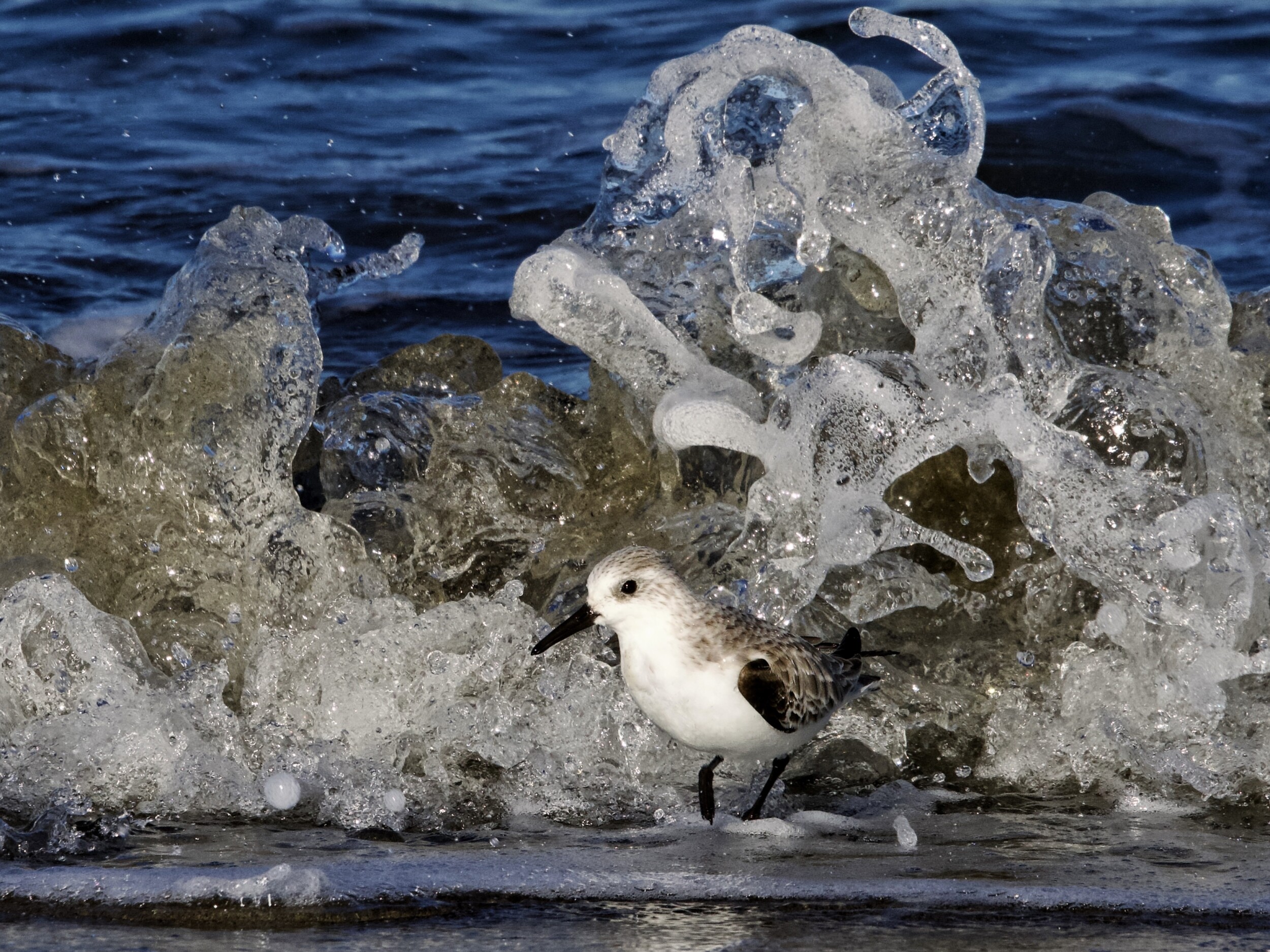
Sanderlings in California
Sanderlings are so common on our winter beaches, it would be easy to think of them as mundane. But the life history of this little, pale shorebird who so perfectly blends in with the surf, is actually extraordinary.
Sanderlings migrate long distances, from 3,000 to 10,000 miles, to breed only in the high Arctic tundra.
They lack a back toe which helps them skitter in a blur against receding tides, probing for mole crabs, and bathing in the swash.
They advance and retreat with the waves, a choreography of tiptoes. Their skinny black legs barely mark the sand as they chase the water, or scavenge the mud and wrack line for food: insects, marine worms, anthropods, isopods.
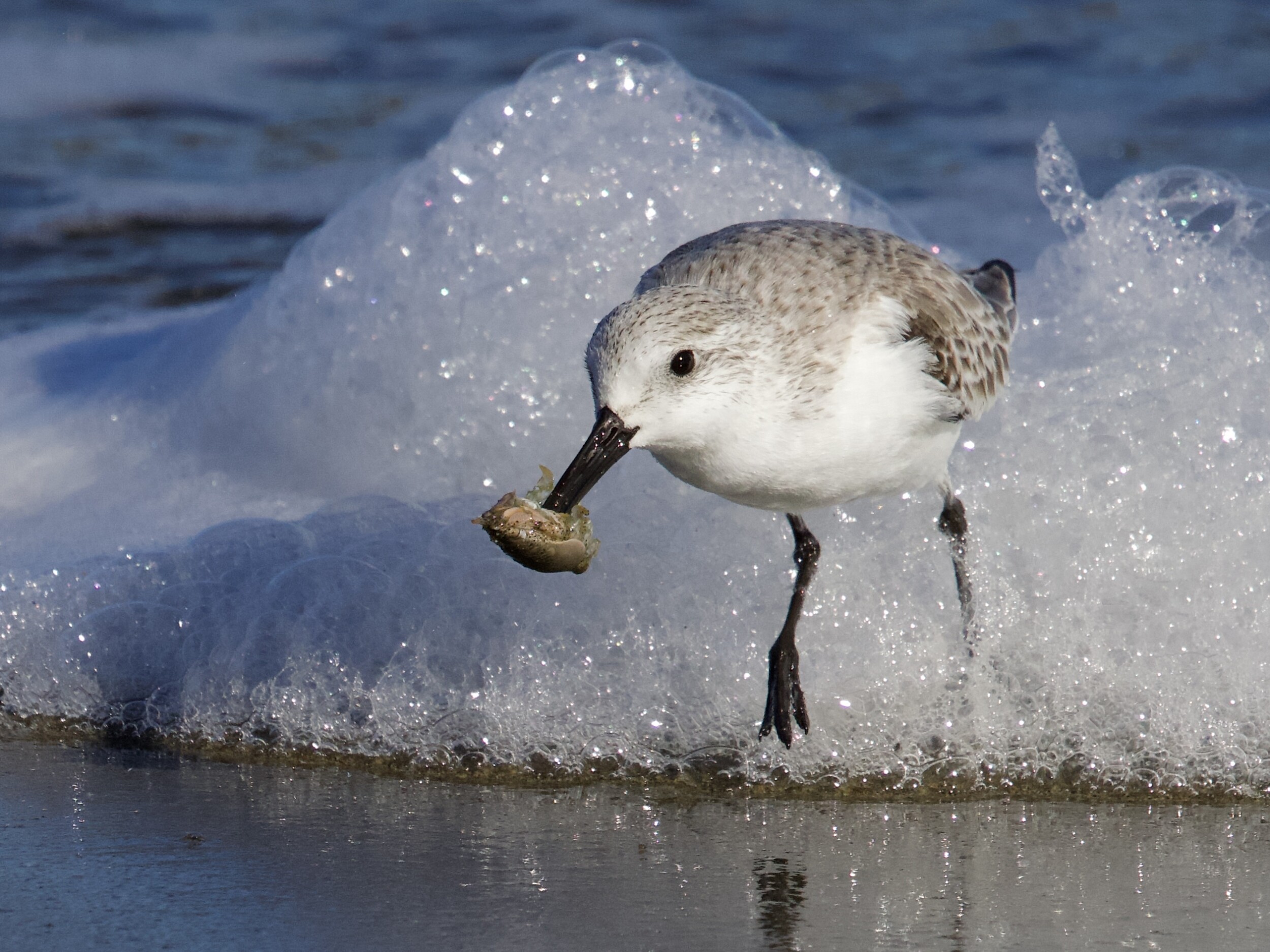
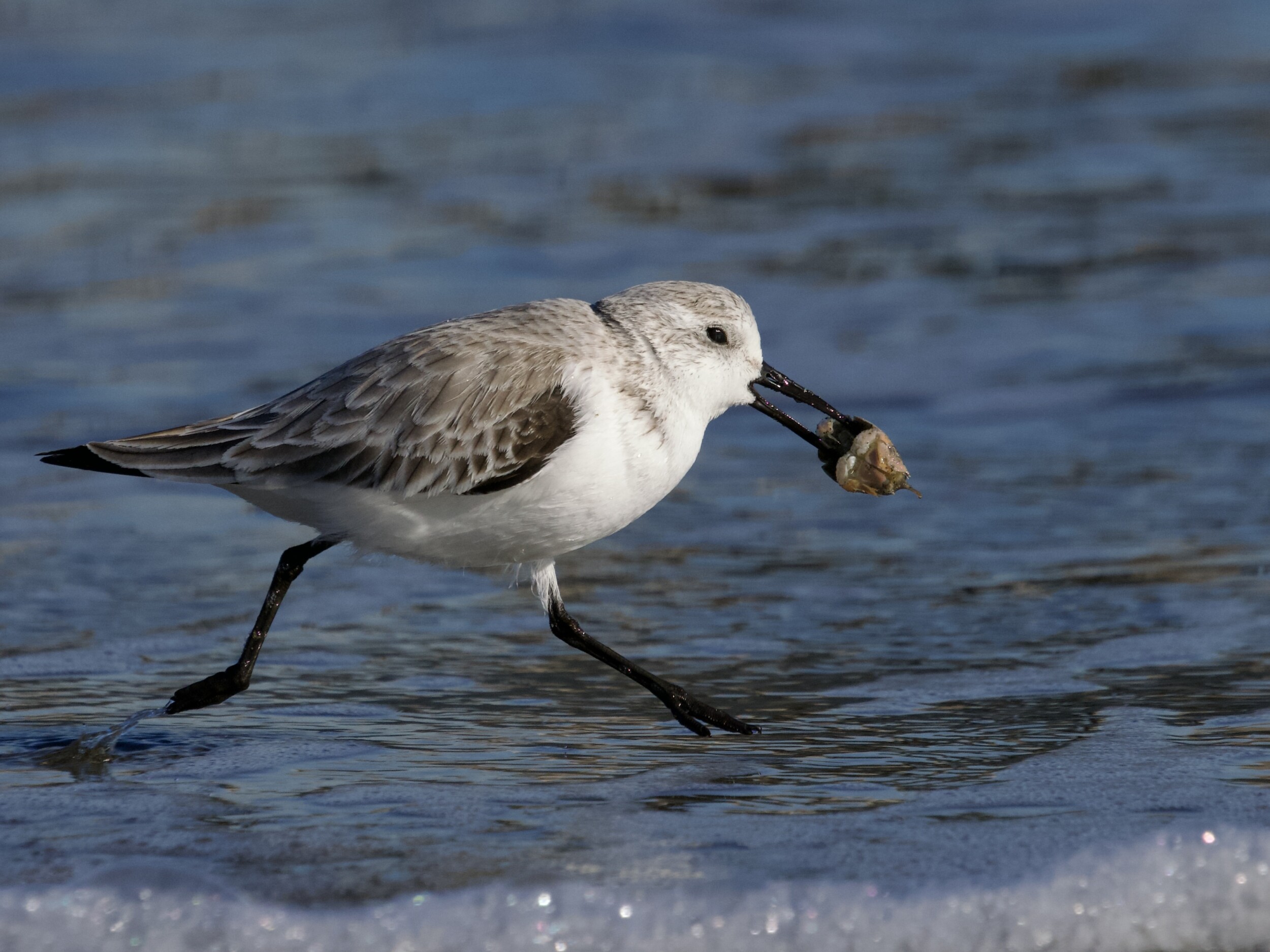
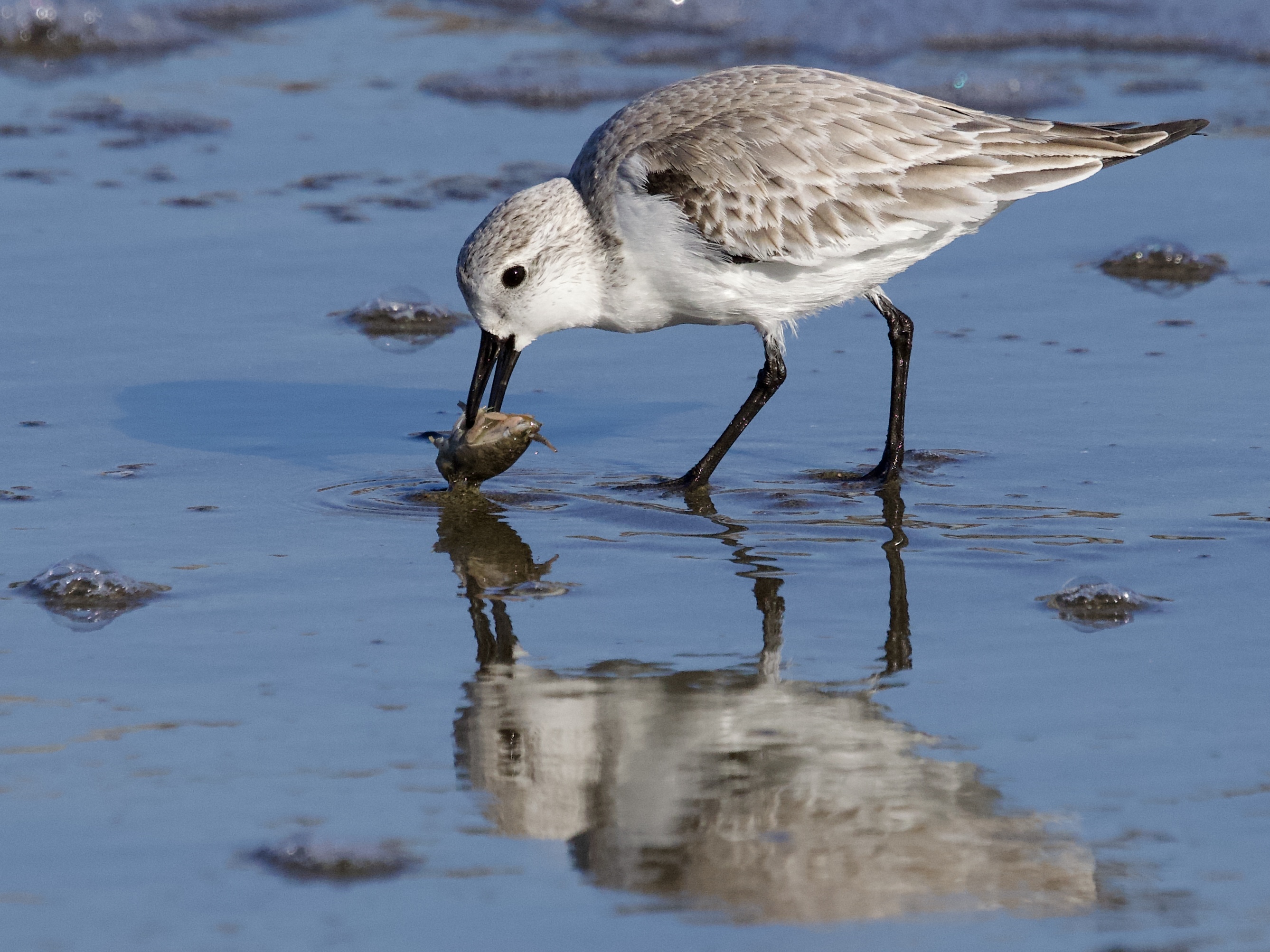
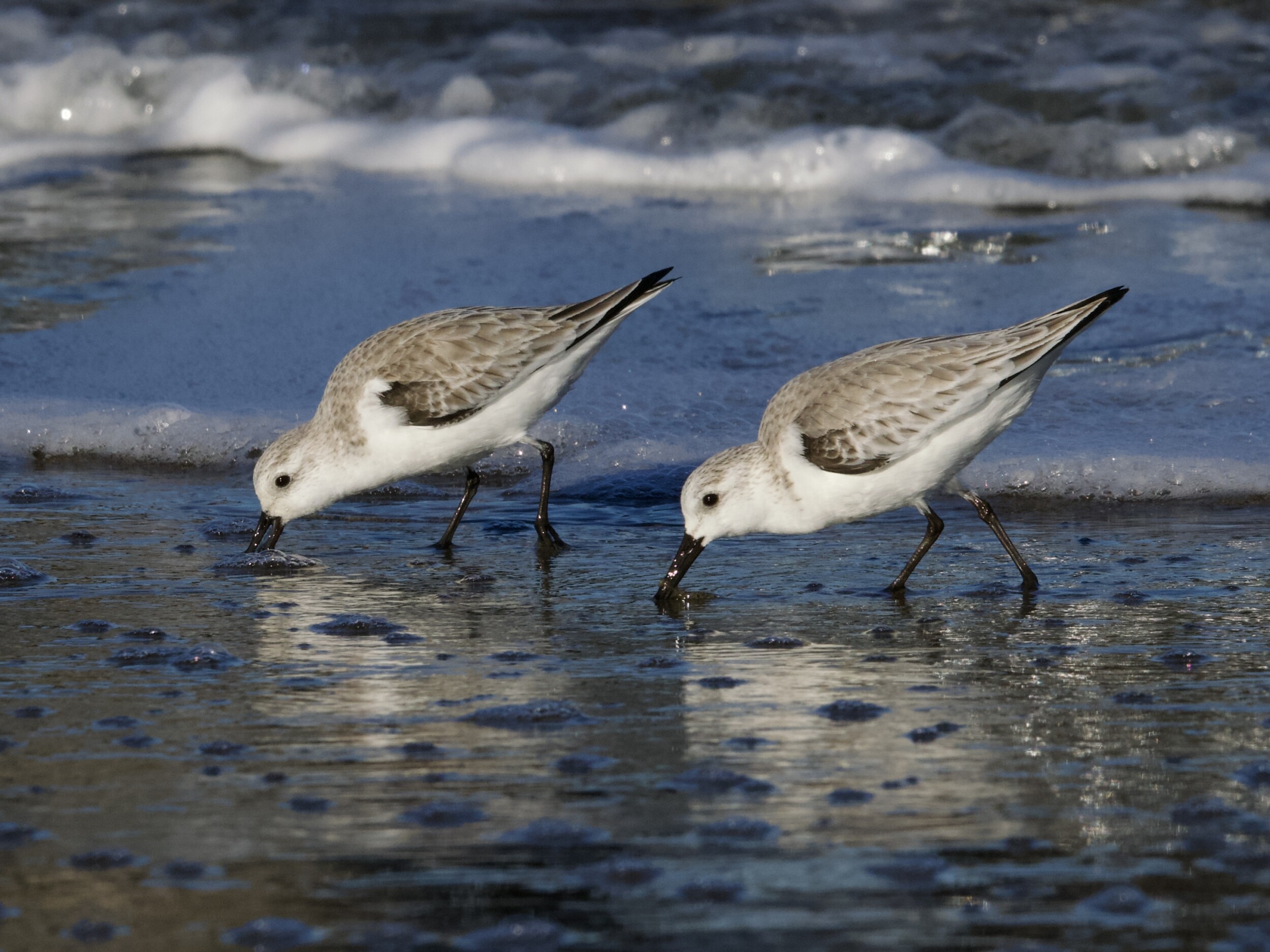
I came upon a small group of Sanderlings where I frequently see them, on the beach at Crissy Field in San Francisco. It’s also where off-leash dogs, unfortunately, chase most of the birds who land there, interrupting critical feeding and resting time.
On this day, the Sanderlings seemed to escape the notice of all but the most determined bird dogs. So, they were left to forage and feed on their own, between tides and pilings.
As with many birds, their future survival is at risk from climate change at their breeding grounds, and habitat loss throughout their range. They also scavenge among our ocean waste and plastics, fishing tackle, and other entanglement hazards.
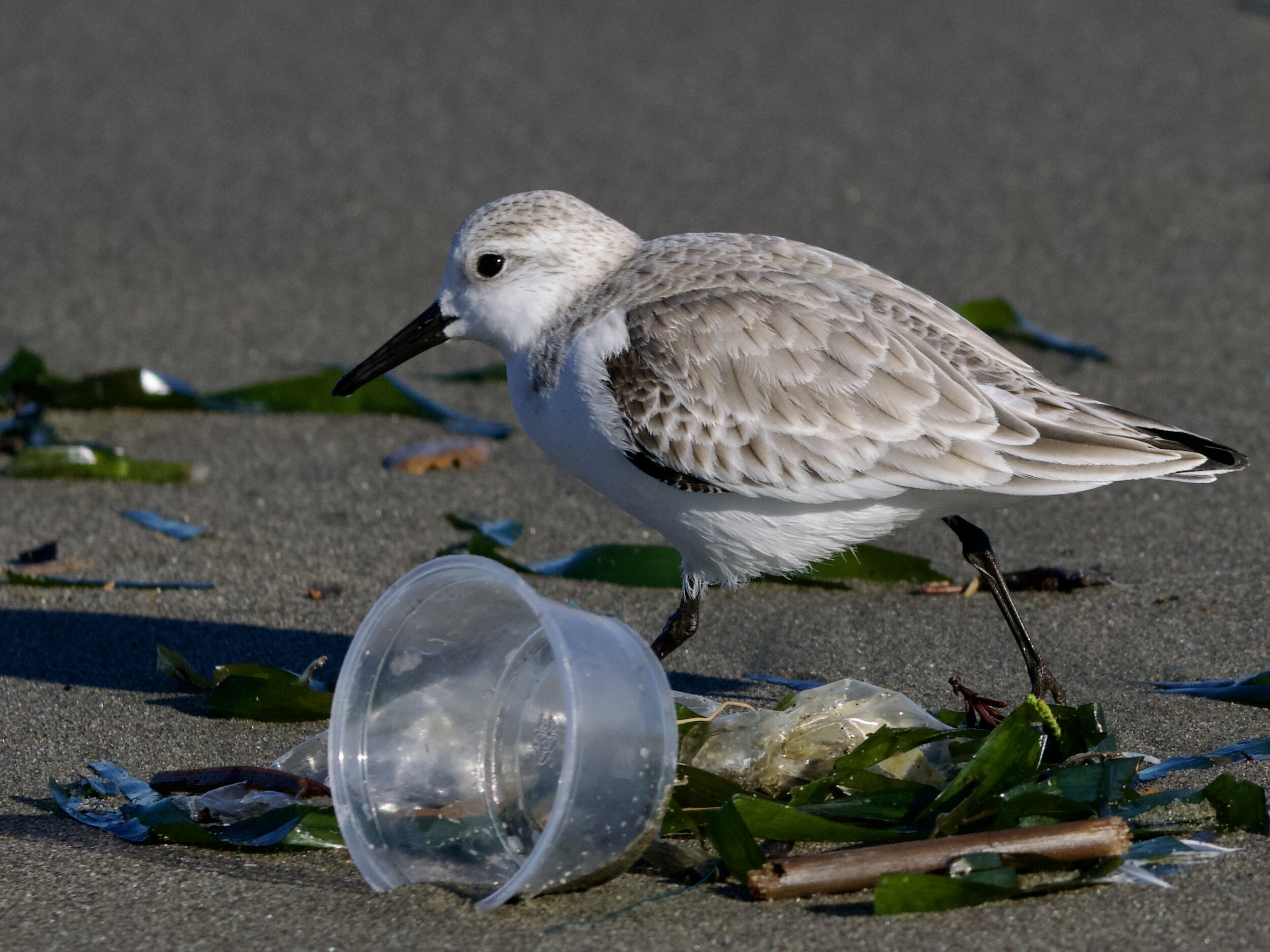
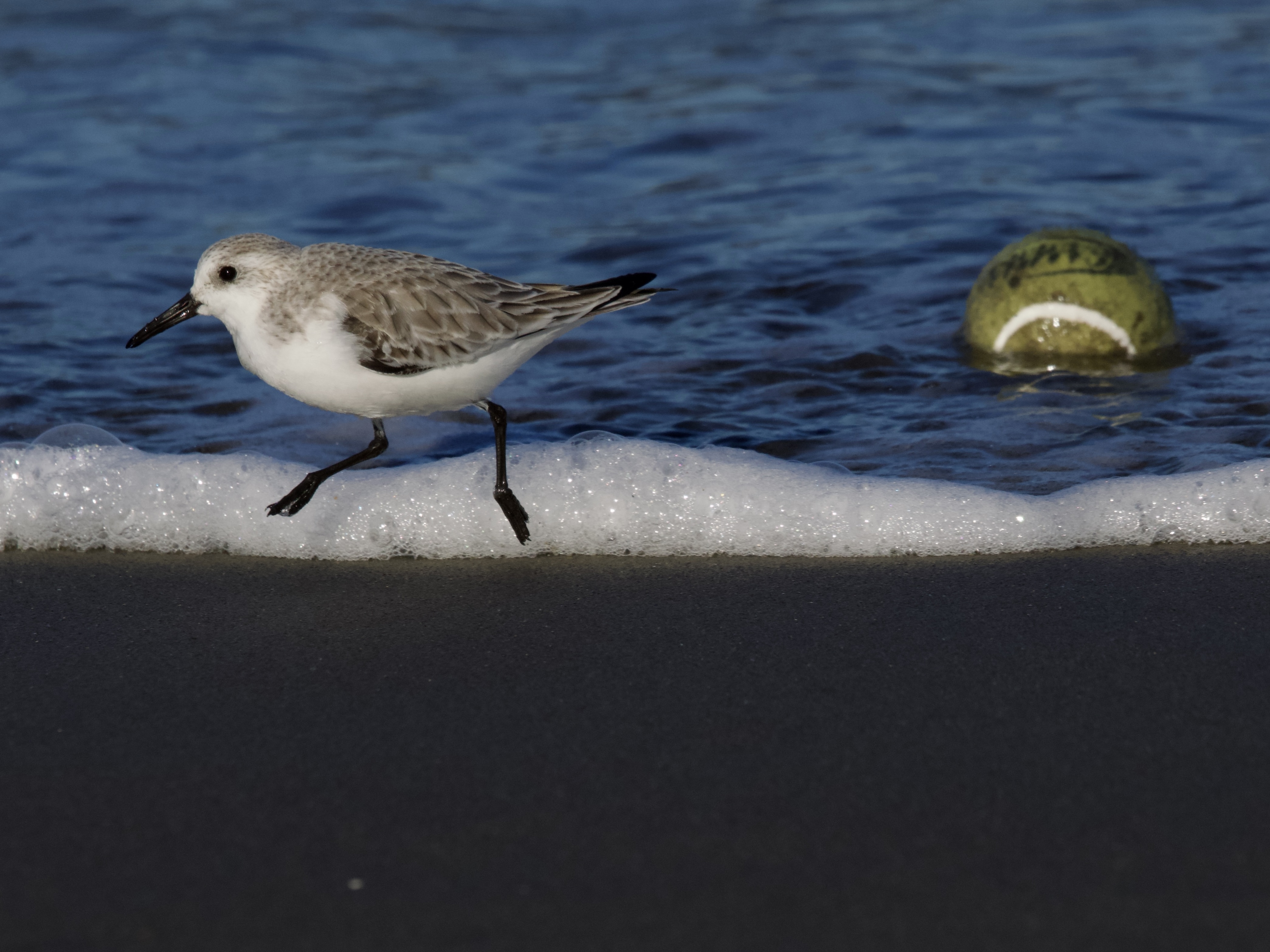
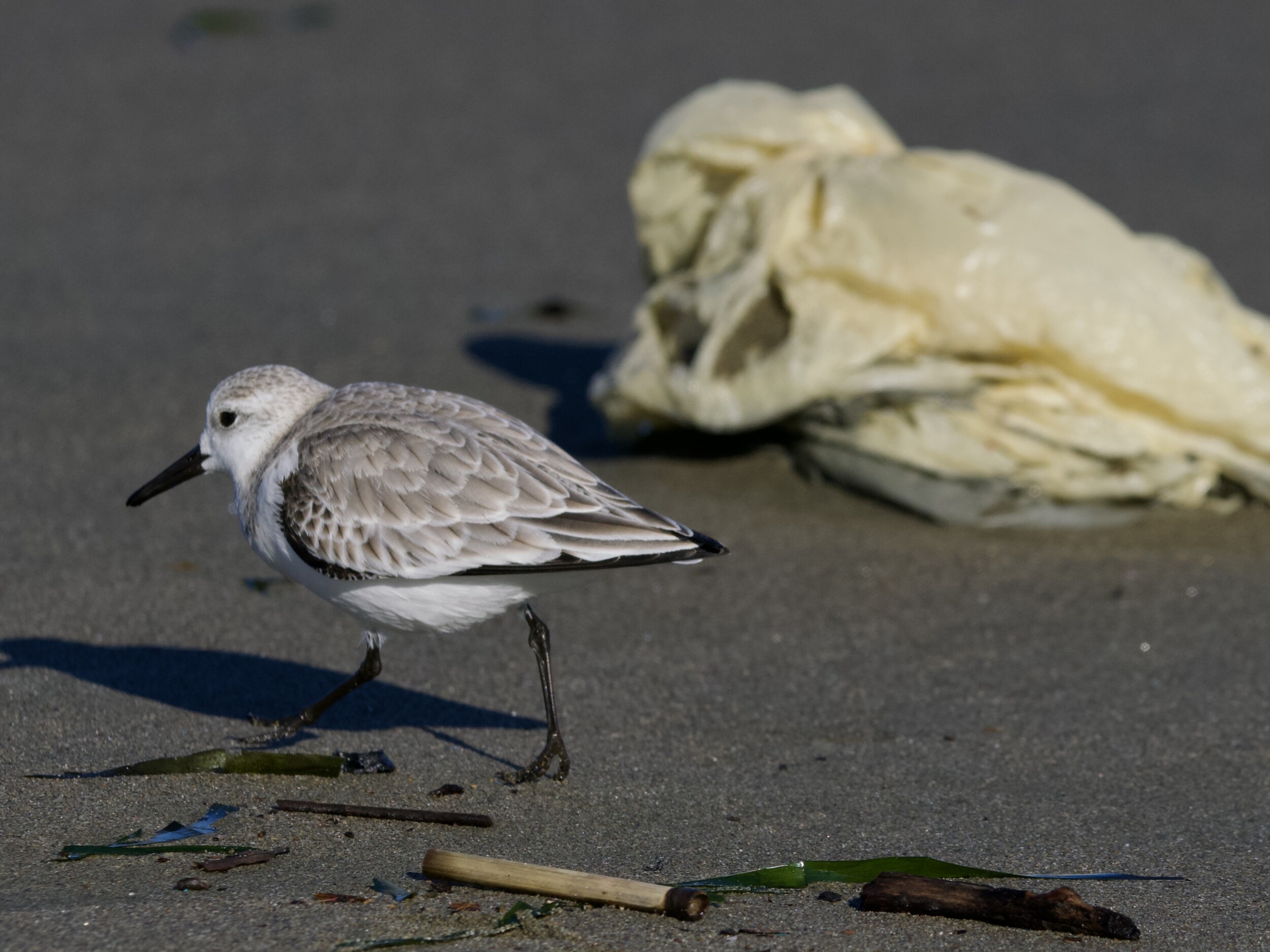
If you see entanglement hazards at the beach and can safely dispose of them, please make the effort. All it takes is piece of fishing monofilament, one hook, one discarded hair tie or mask loop to change a bird’s life forever. I recently picked this up in the low tide at Ocean Beach San Francisco. It looks to be a bait cage, but as a non-fisher-person, I’m not 100 percent sure. The ocean and beach trash issue is beyond pervasive, and becomes even more noticeable when I’m in the sand and mud with the shorebirds, seeing life from their point of view.
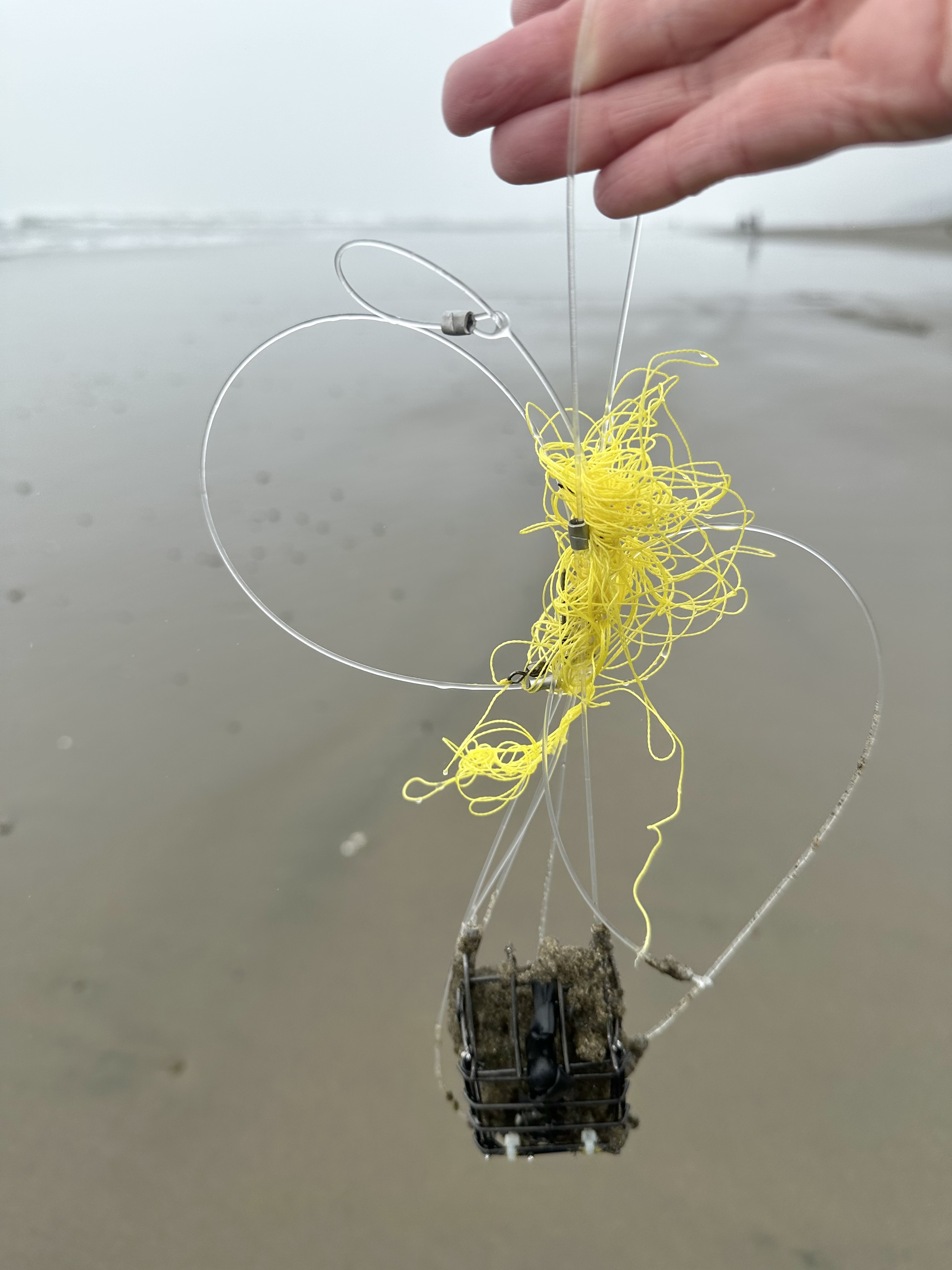

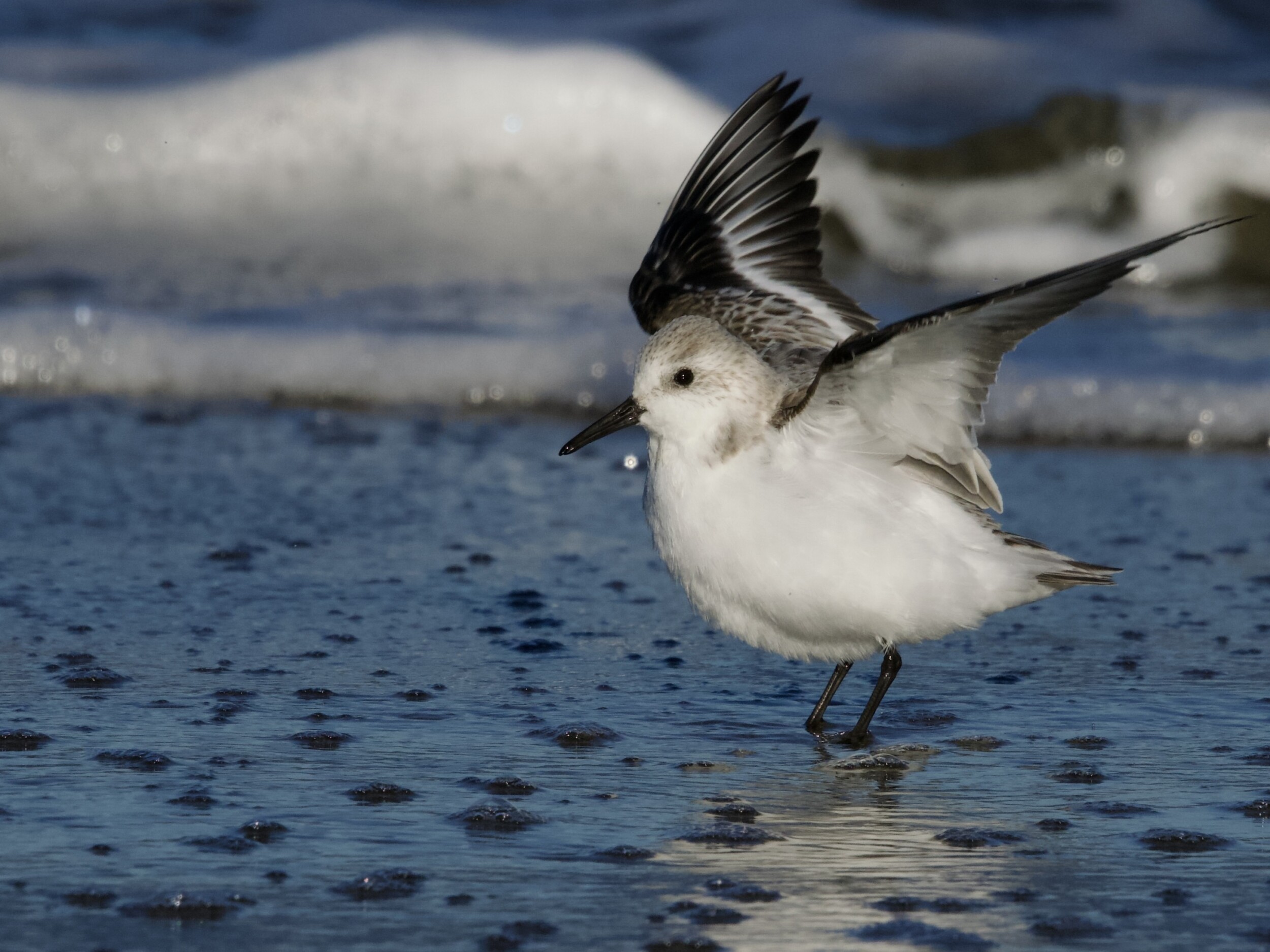
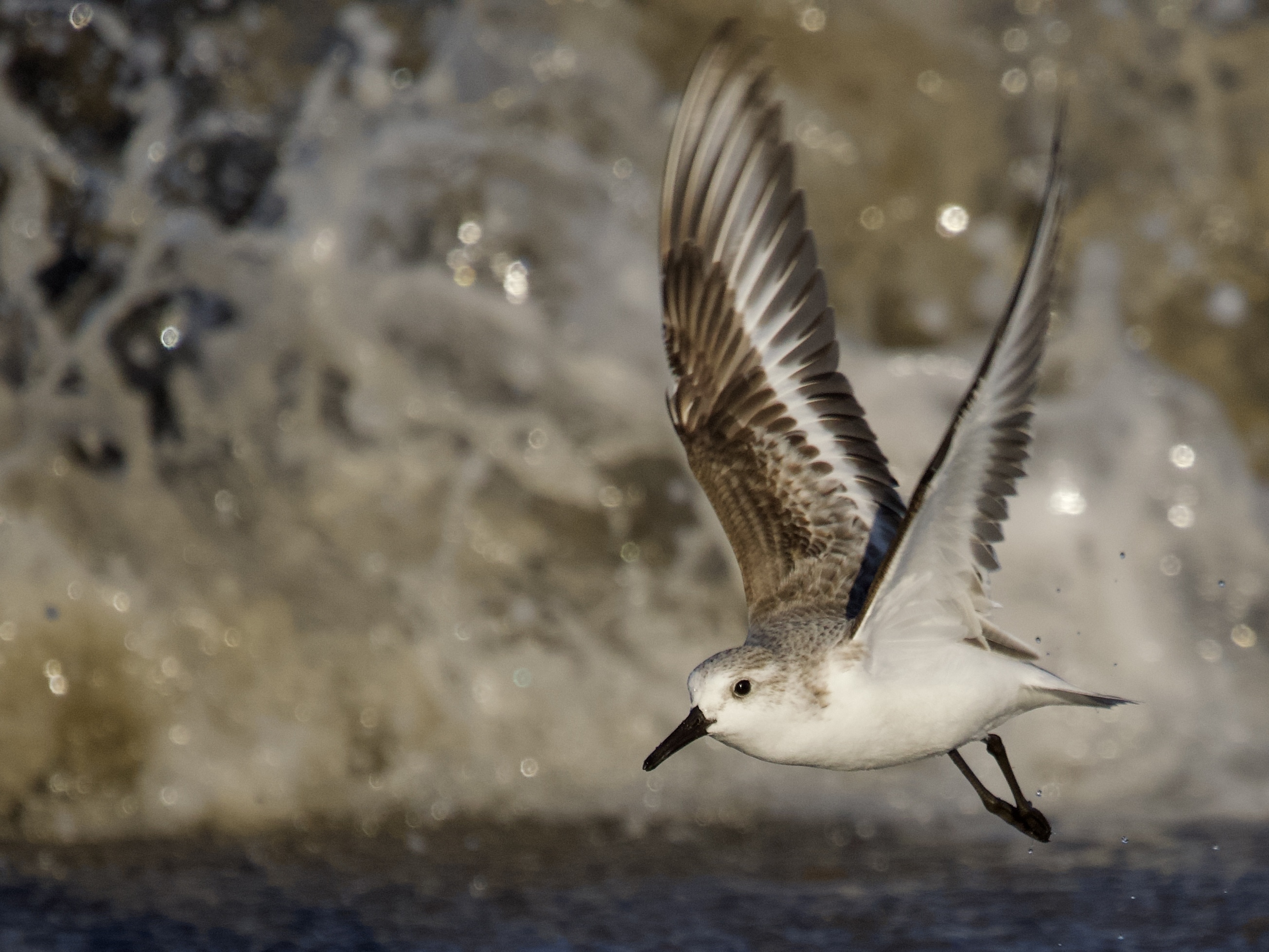
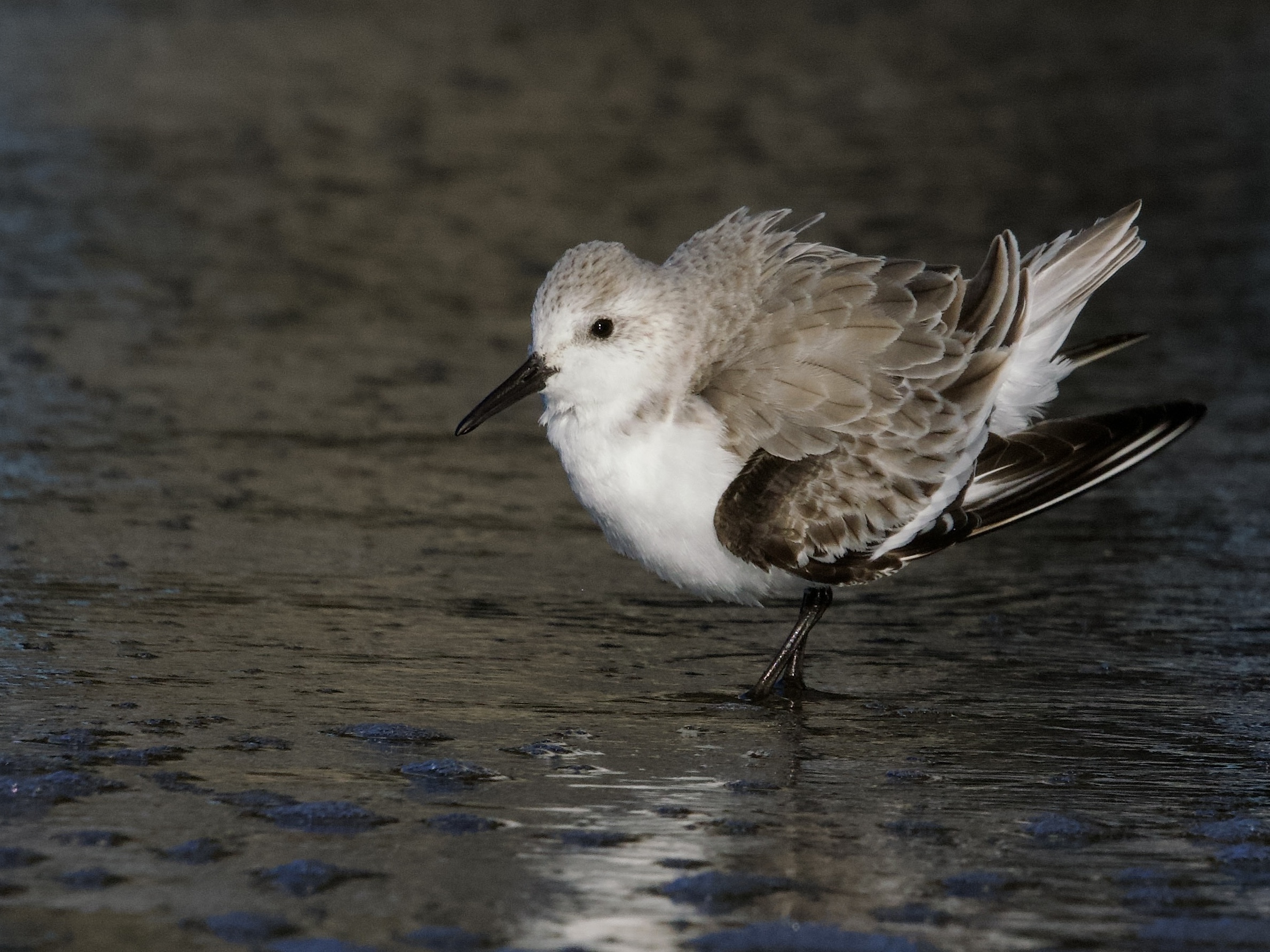
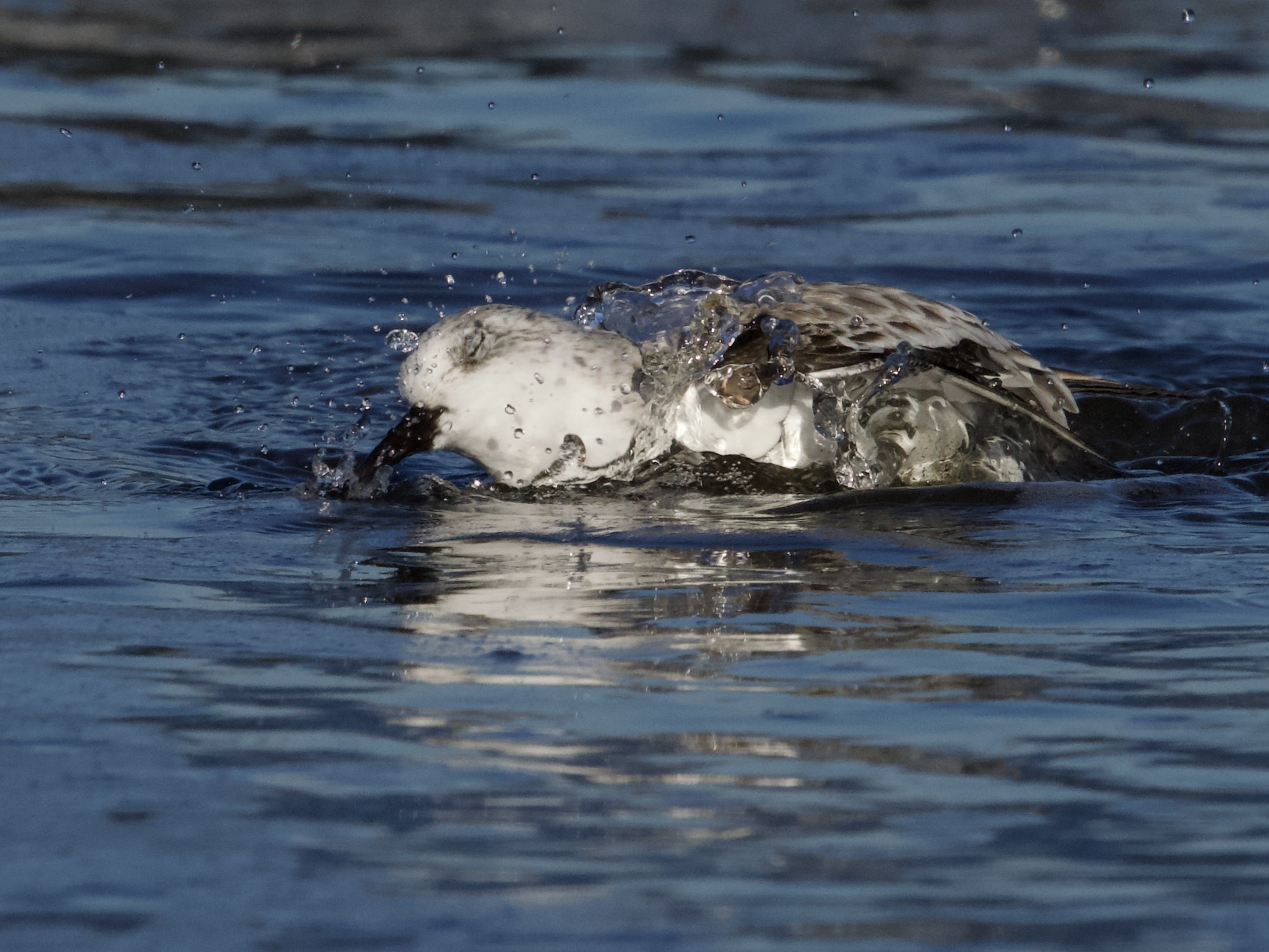
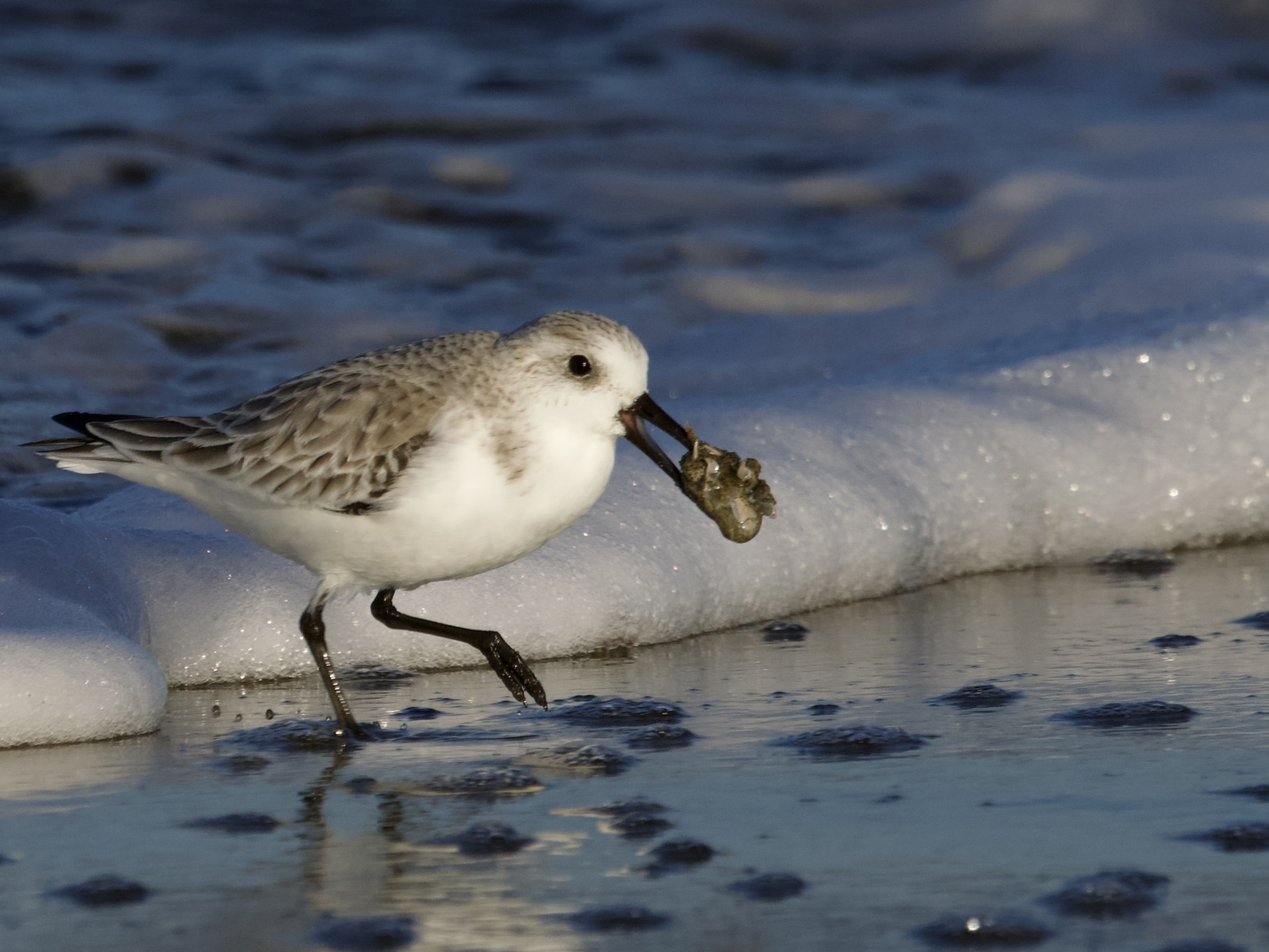
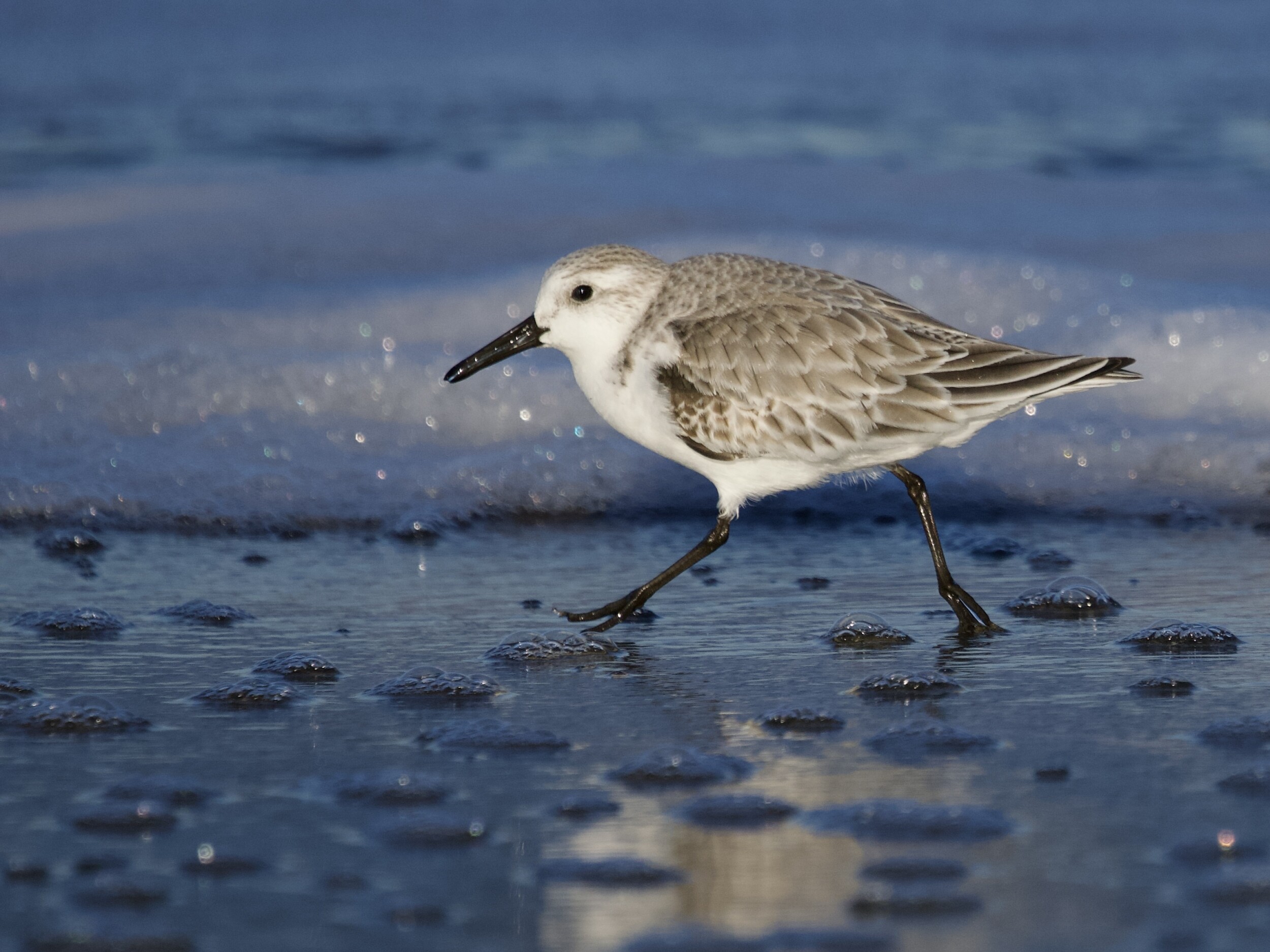
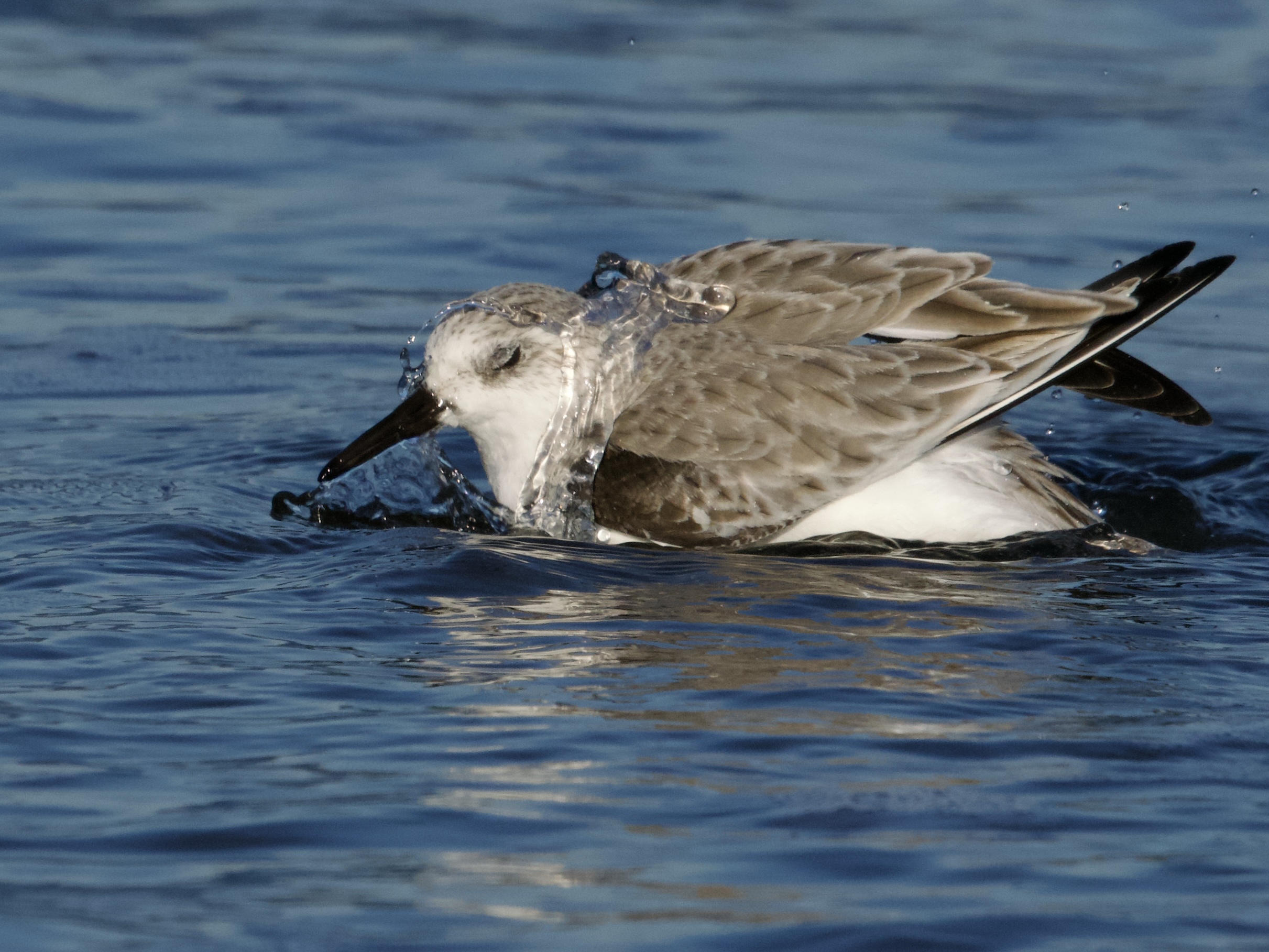
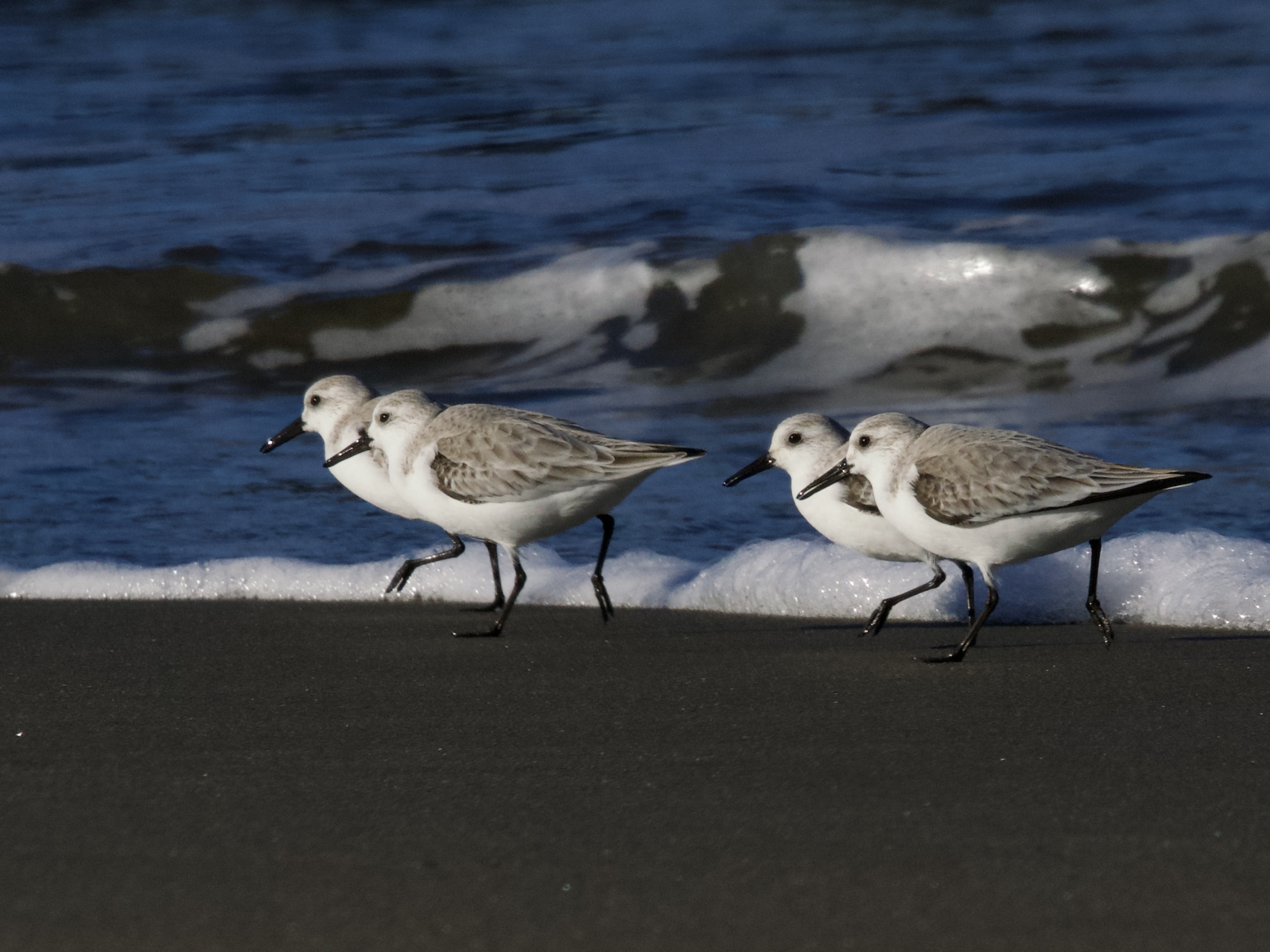
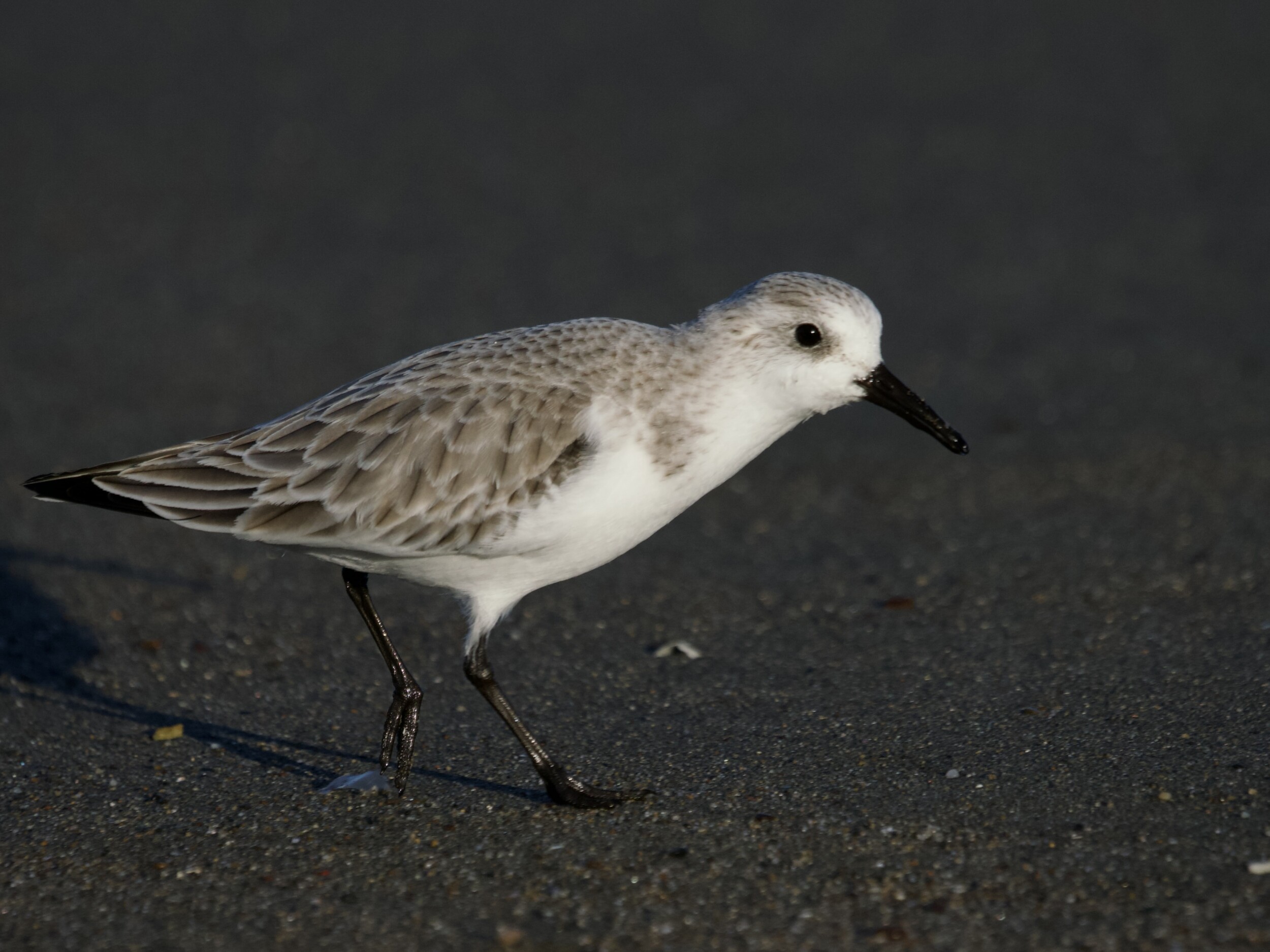
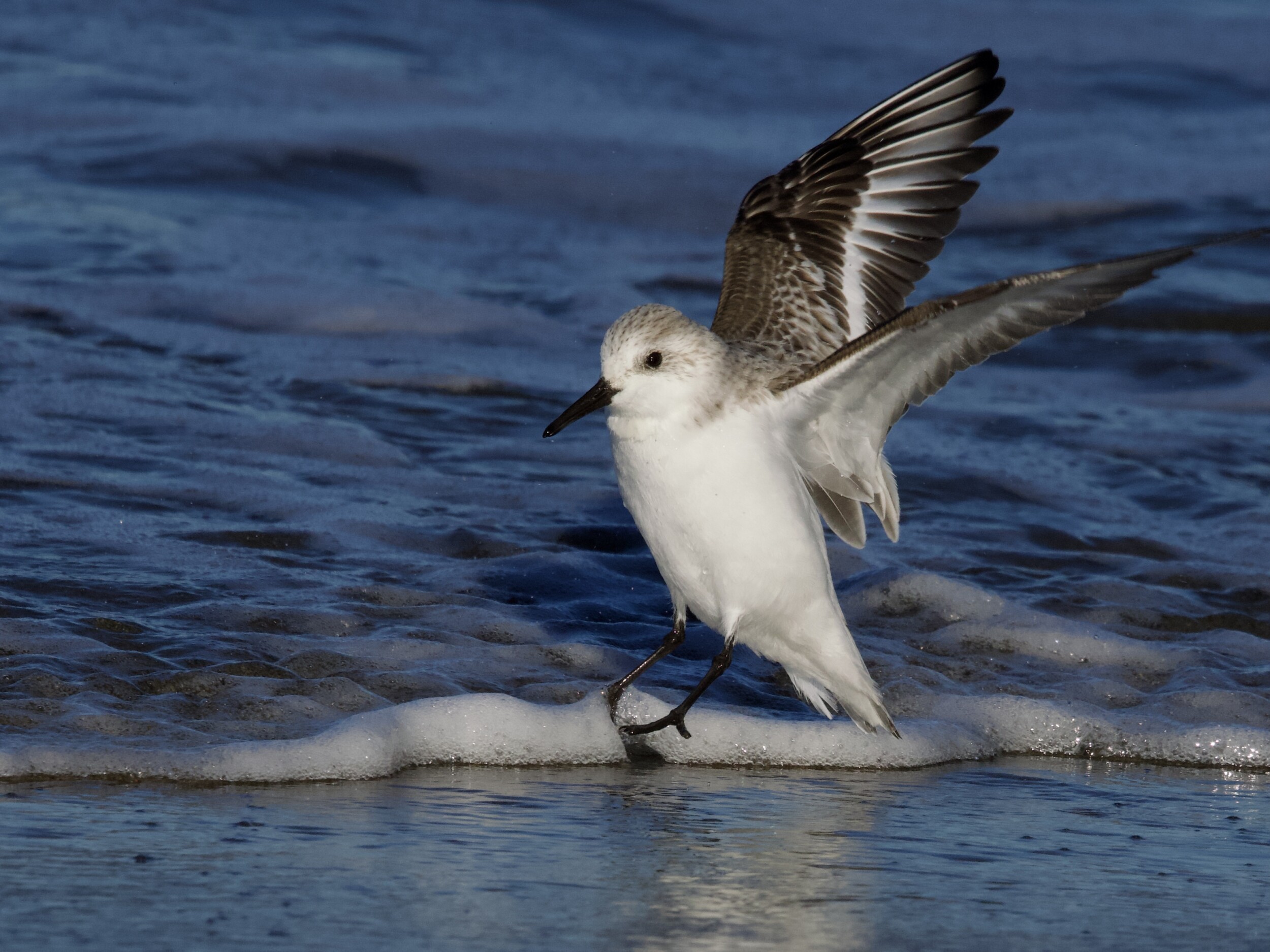
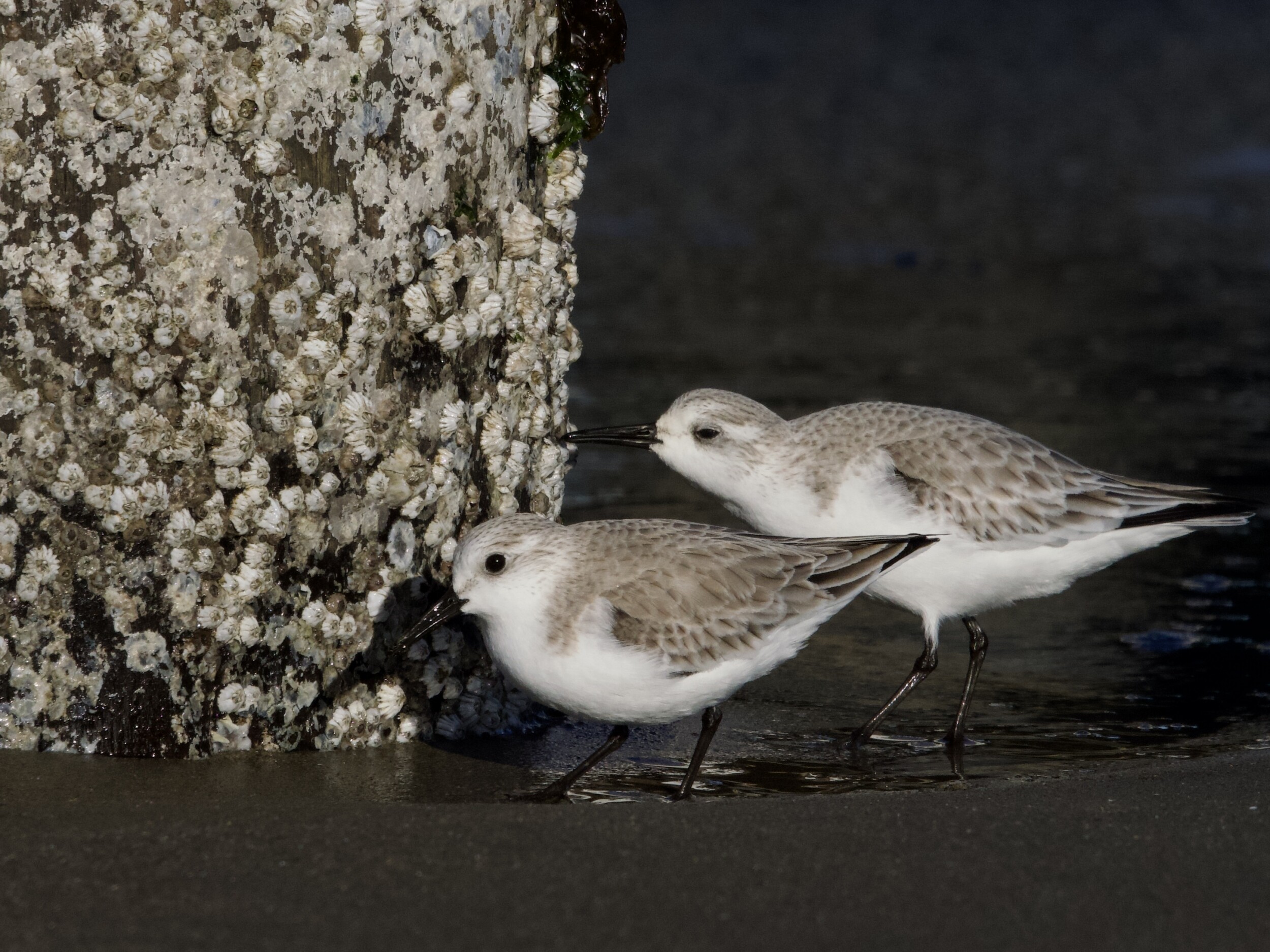
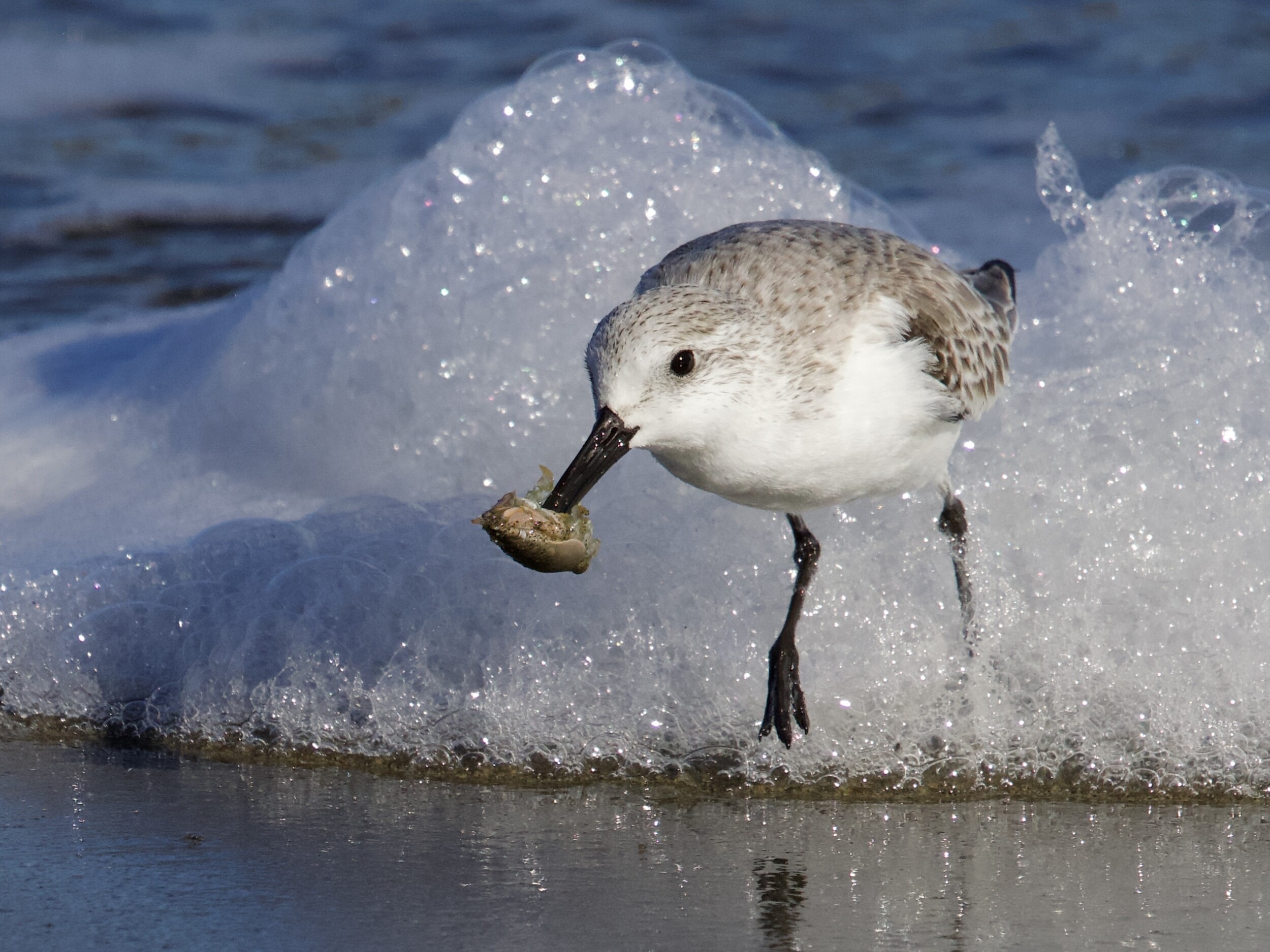
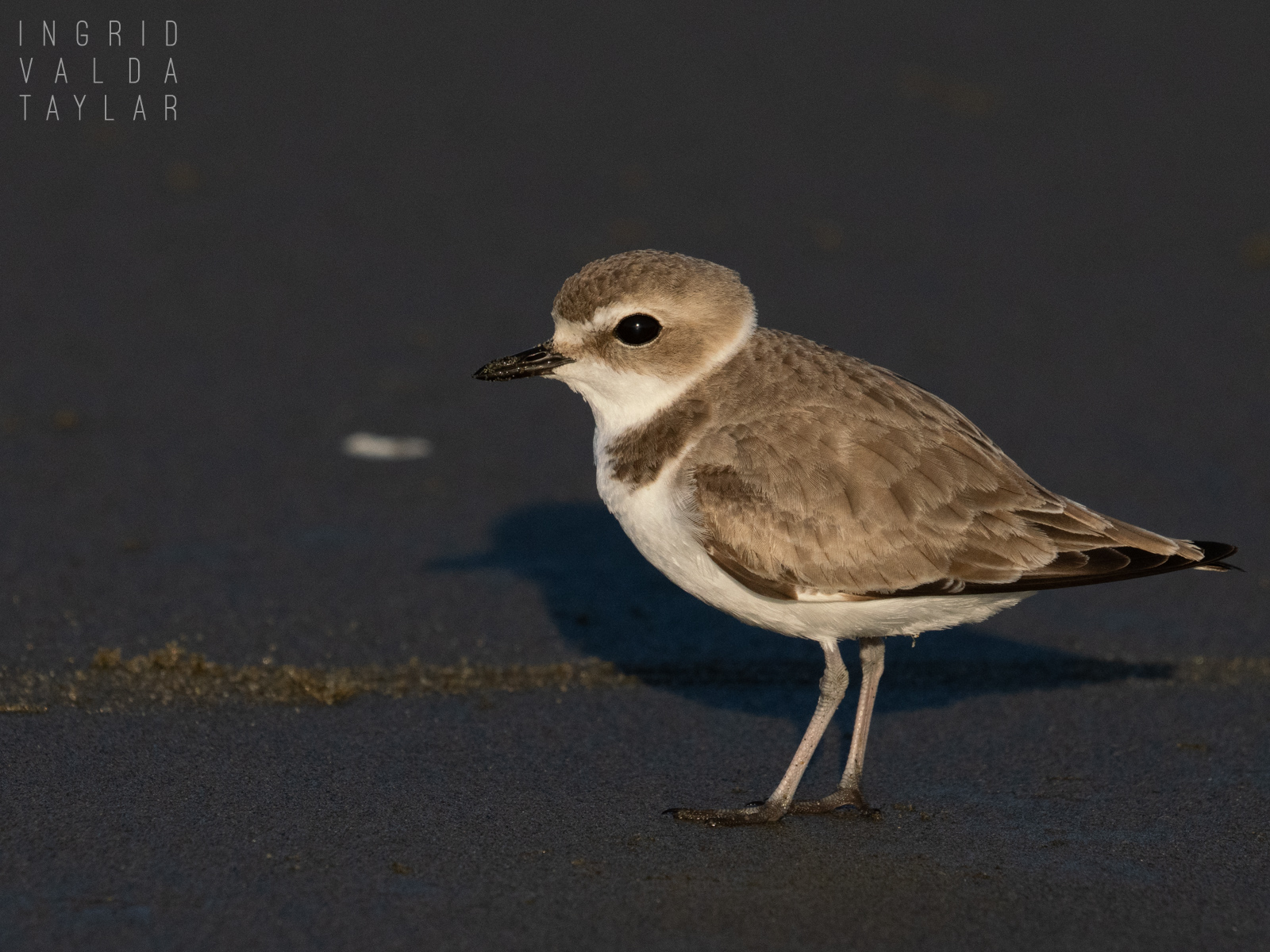
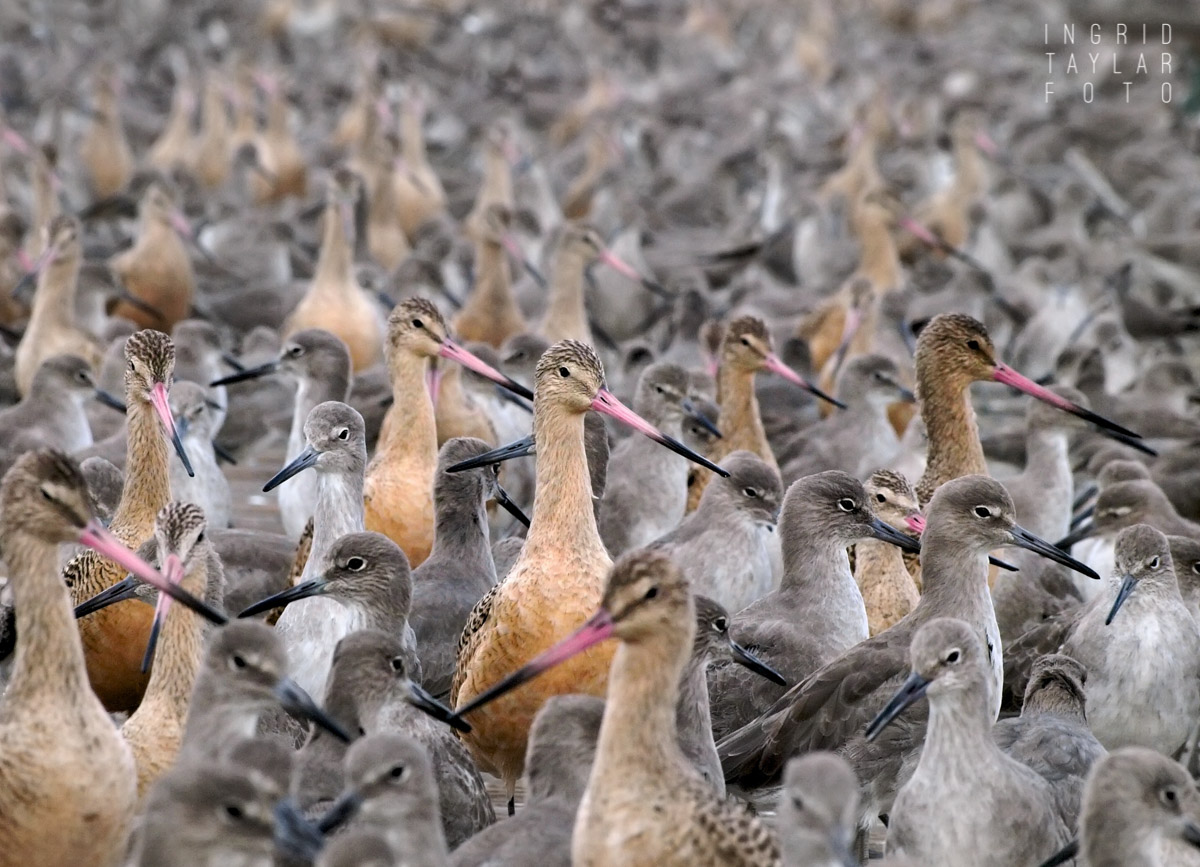
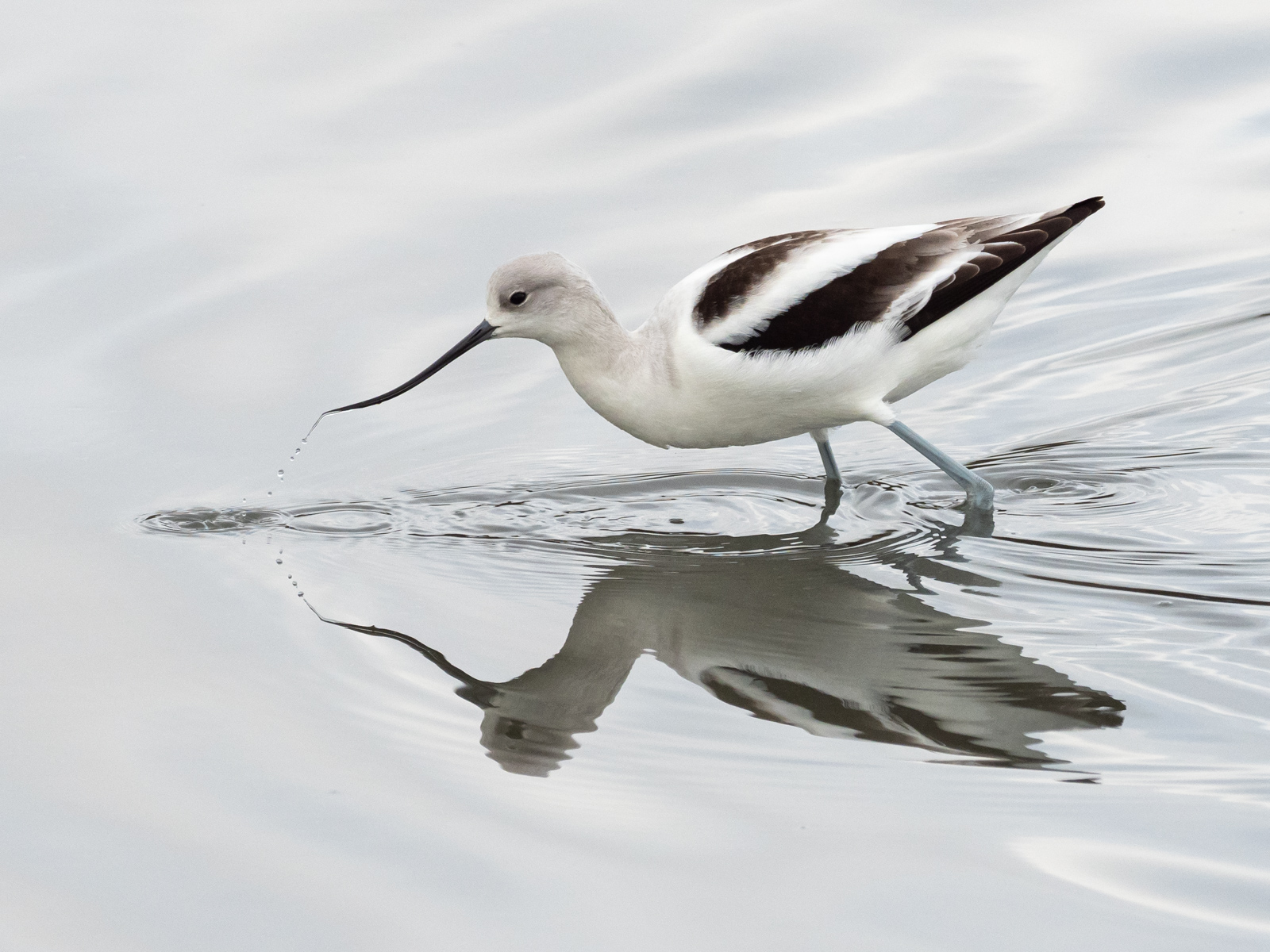
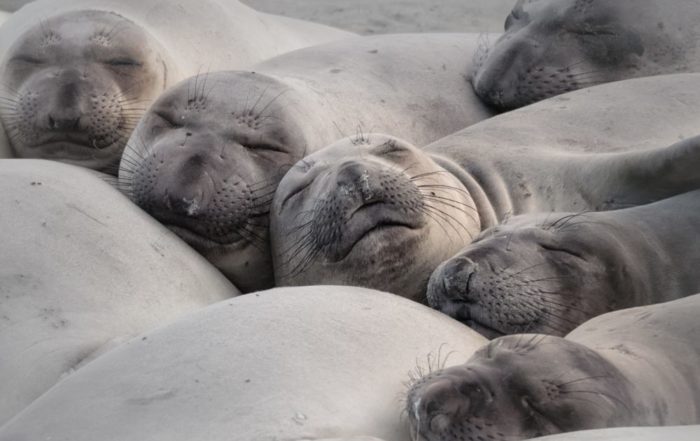
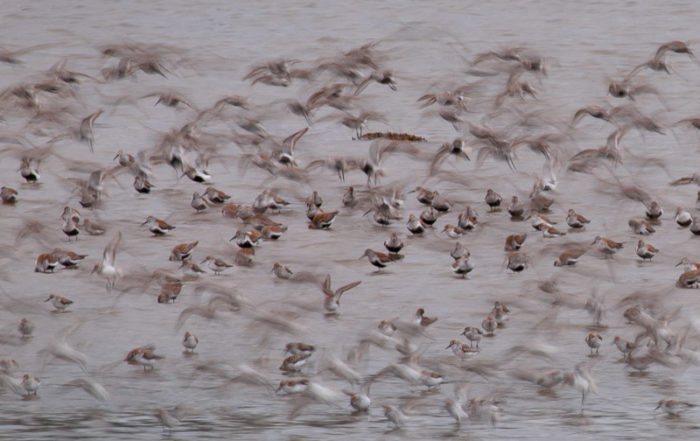
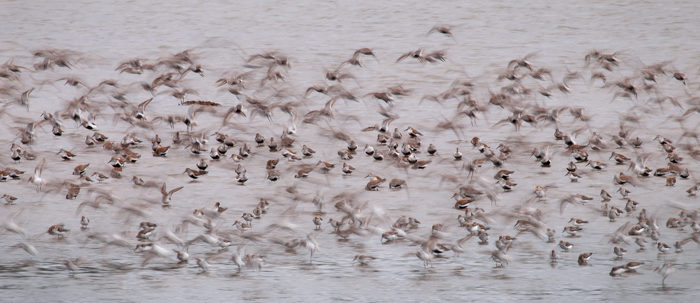
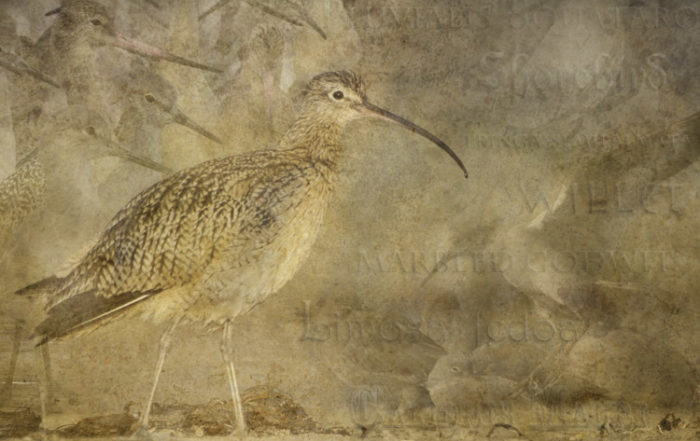

Leave A Comment